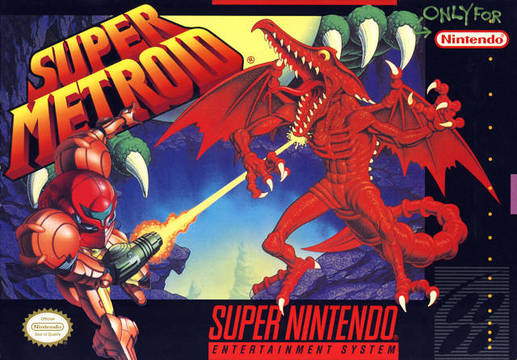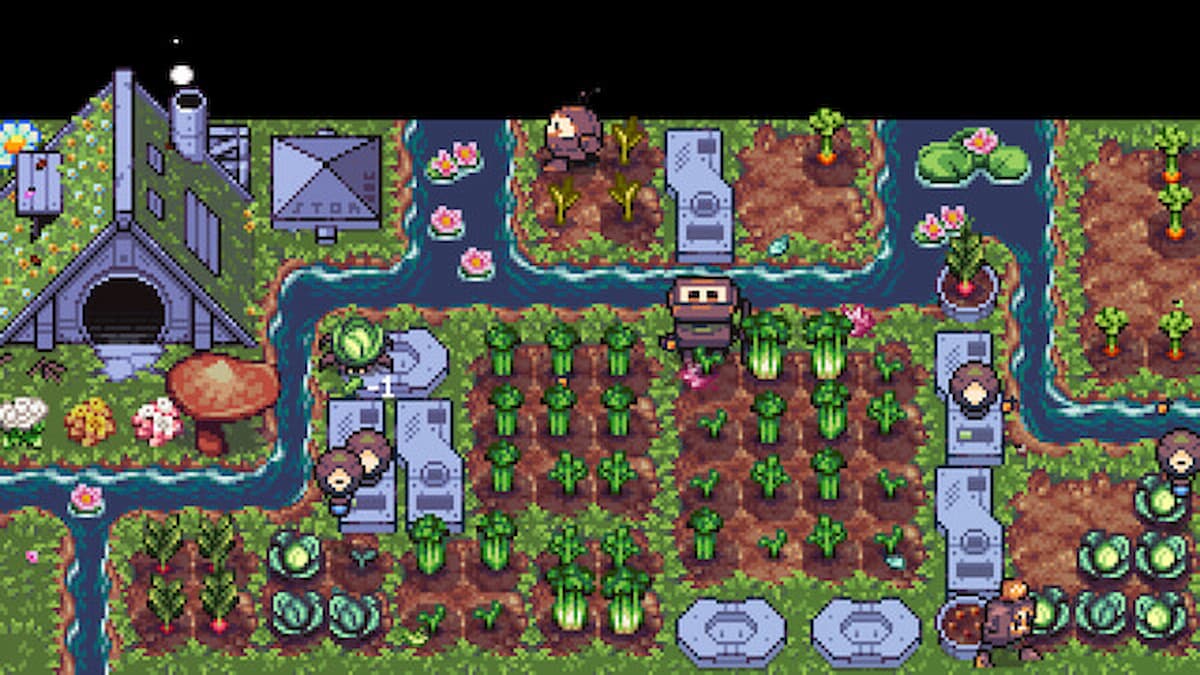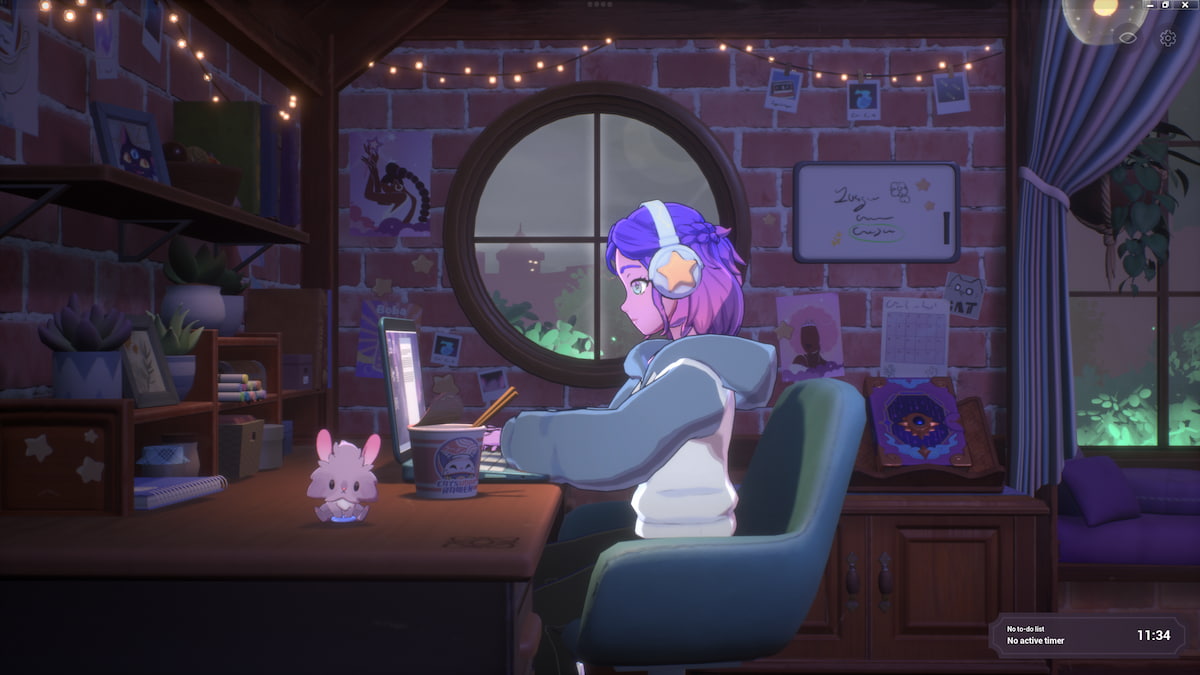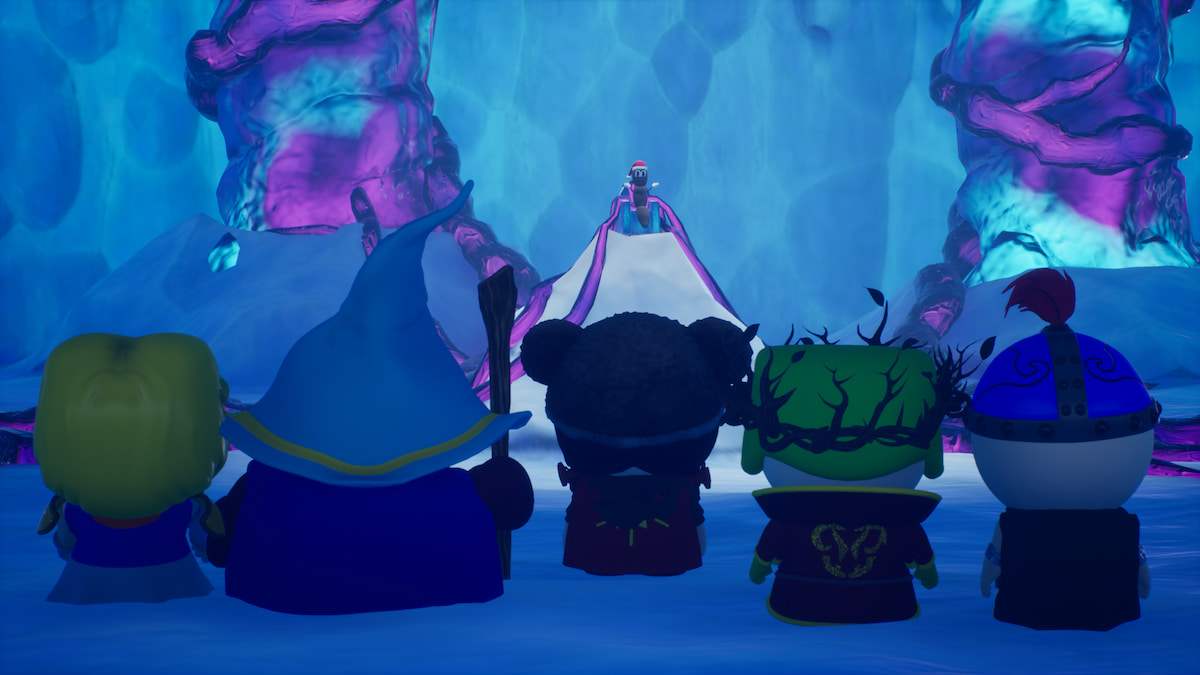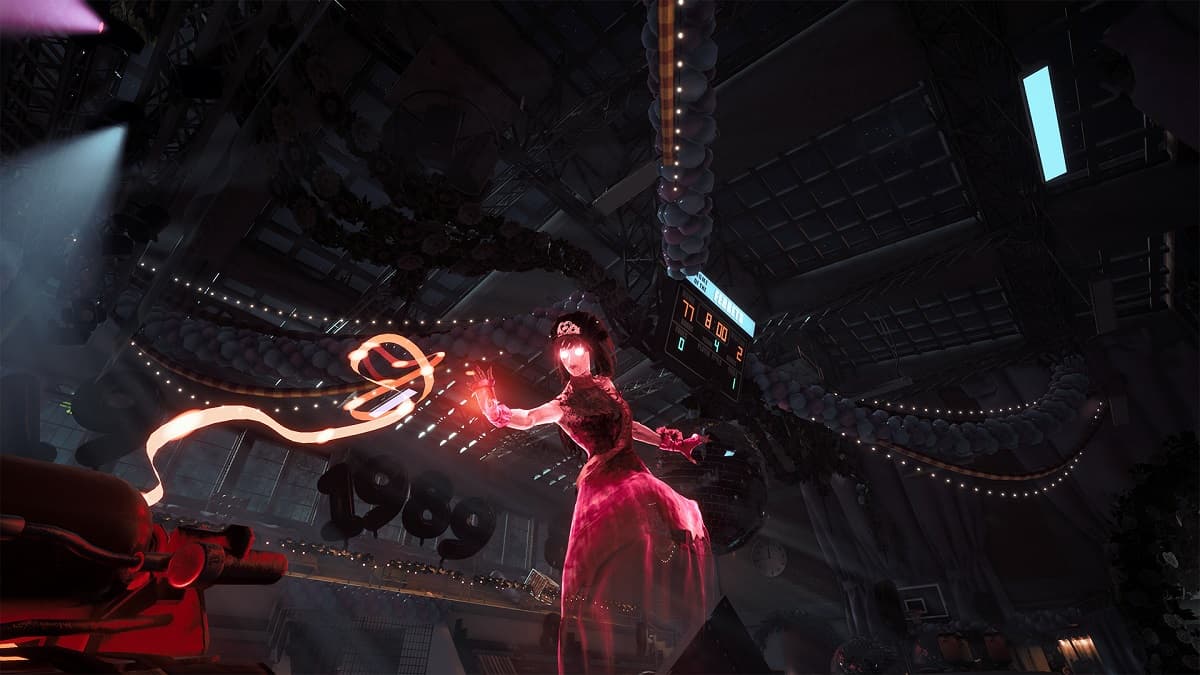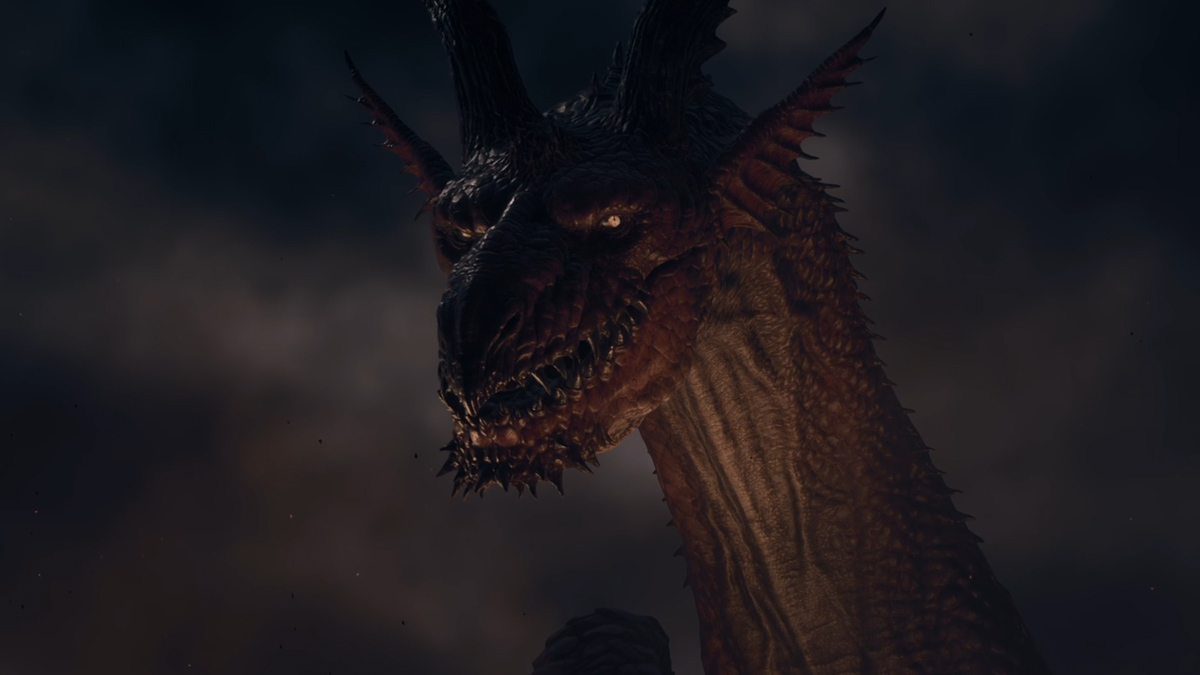Today is Day 3 in my Metroid series rewind reviews, and with this glorious day comes the time for Samus Aran to leave the 8-bit caverns of the Gameboy and the Nintendo Entertainment System. After landing in the year 1994, Samus Aran has officially grounded herself on the glorious hardware that is the 16-bit Super Nintendo.
That’s right Metroid fans, we are revisiting what many consider to be the poster child of the Metroid series, a game so well received by its fans that all games that have succeeded it (save for a few) have all been considered mere peasants before its stupendous image, a game so great that even to this day it still bolsters a 96 average score on Metacritic. We are – of course – talking about Super Metroid.
As is the case with all of my Rewind Reviews, Super Metroid will undergo a review process through the eyes of a 2015 critic. No nostalgia glasses, no excuses, no praises based on hardware, and no sparing myself from the flamethrowers of readers. Nothing will spare this fan favorite from anything that we – as modern gamers – would expect from the genre today. Now that I’ve stalled long enough to get my Varia suit on to spare me from the heat of the fans, let’s take a look at Super Metroid for the SNES.
The Plot
While I would give a warning that this section will contain spoilers from the earlier Metroid titles, we are almost 30 years after the original NES version of Metroid, as well as 20 years after the release of both Metroid II and Super Metroid. That being said, if you plan on playing Super Metroid before either of the two predecessors then I feel obligated to warn you that this game spoils the ending of both games within the first five minutes of gameplay.
If you don’t believe me watch the video below. You have been warned.
While the first cinematic in the Metroid universe is by no means the most beautiful piece by today’s standards, Super Metroid’s opening is actually quite remarkable. The reason is that despite not having fully-voiced high-quality videos, the game manages to tell us what we need to know about the previous games, as well as what we need to know about this game in a timely fashion.
Super Metroid tells us right away what Samus Aran’s previous accomplishments are, what has happened between Metroid II and Super Metroid, as well as why Super Metroid is now taking place, all in one convenient sprite-animated cinematic. The rest of the plot, however, is told in-game without a single word; the story is told purely through gameplay.
After a brief encounter with series antagonist, Ridley, players land on Zebes in an attempt to hunt the space dragon down and retrieve the baby metroid. As players venture through Zebes for the second time in their Metroid career they will immediately take note that they are being watched by a camera that activates the very first second they pick up the morph ball upgrade in Brinstar. Traveling through the various areas reveals that not only has Ridley returned, but the entire Space Pirate hierarchy, eventually ending with Samus facing Mother Brain once more in Tourian. The most powerful moment of story through gameplay, however, comes through the game’s ending.
START OF SPOILERS
When players fight Mother Brain they find themselves powerless to defeat the towering creature as it blasts them with its Hyper Beam, taking away all of the player’s energy as Samus is forced upon her knees. What happens next, however, is completely unexpected. The very same baby metroid we were supposed to recover comes to our aid, attacking Mother Brain before coming down to give its energy to Samus.
The metroid’s efforts are soon punished by Mother Brain as it kills off the baby metroid with a blast of energy. The moment makes us sympathize for the creepy alien creature, and with our newfound cause for vengeance we proceed to blast Mother Brain to oblivion.
END OF SPOILERS
While the story is by no means a deep and meaningful plot, it provides us with what we need – a goal, just like all previous Metroid titles. Unfortunately, my praises for the plot end here since this was excusable for the 8-bit NES and Gameboy. As we hit the later part of the Super Nintendo’s lifespan we should be expecting something more.
The cinematic recap at the beginning of the game does nothing more than what the instruction manual already provides. While the recap is much appreciated, it is equally pointless. By this time in Metroid’s career it should have something more concrete for players than “Oh no, the Space Pirates are back! You have to stop the previously thought to be dead Space Pirates on Zebes (again)! Help us Samus!”
Simply put: if Super Metroid’s plot did not exist, it would not matter. While it is far from a condemning point, a game that wants to sell a story needs to have one that is a little more solid than a rehash of the original Metroid with a baby metroid slapped on for good measure, especially considering it is the third installment in the series.
Gameplay
The Beautiful:
For the first time in a Rewind Review I have added a section for “beautiful” gameplay mechanics. The reason for its inclusion is that Super Metroid does what a Super Nintendo Metroid title needed to do. All of the improvements that were made in the Gameboy title have been carried over to Super Metroid while some have been further improved. These features include: eight-direction aiming, an even larger array of items, the ability to choose which of said items are active at any given time (something that to this day has never been reimplemented), as well as every single other upgrade to gameplay that Metroid II provided.
In-game instructions replace the need to constantly look back at instruction manuals.
Super Metroid marks the first time that players are provided with in-game instructions for various items that they find during their adventure, meaning players will no longer have to rely on the instruction booklet to figure out what their newest tool does.
The game also has finally implemented a map/navigation system, providing players with a means of actually knowing where they are going or where they have been.
The Space Pirate boss, Kraid, is so big that he takes up five whole map slots.
The creature total has also increased to a whopping 85 individual sprites. That is twice as much as Metroid II, and four times as much as the original NES game.
Bosses in Super Metroid are larger than ever before, and their weaknesses are that much harder to exploit as a result. Many of these boss creatures make it near impossible to avoid incoming damage which encourages players to explore Zebes much more thoroughly so that their chances of survival will increase. Add on the hundreds of “sequence breaks” in the game’s otherwise linear exploration and players will find themselves unable to recreate two identical playthroughs unintentionally.
The Ugly:
Some readers may wonder why I have skipped straight to the ugly section in this review, however, there is method to my madness. While Super Metroid has given me reason to introduce the “beautiful” section, it suffers from some major faults or failings that could have been easily resolved even during the Super Nintendo’s lifespan.
One of these faults is the poorly thought out control scheme.
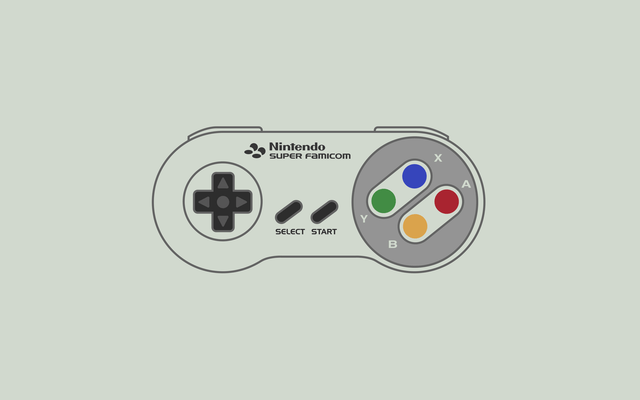 The image above portrays the typical Super Nintendo/Super Famicom controller. Note that the controller has a total of 8 buttons excluding the d-pad. This is two more buttons than a later Metroid title – Metroid Fusion – had to work with. The issue I am beating around the bush about is the dedication of the B button to the run command, and the Y button to the “turn off special item” function. Neither of these buttons serve a reasonable functionality since players never have a point where running is pointless or unruly, and likewise the missiles or super missiles could have simply been assigned to either of the buttons that would be otherwise free. Not only would this allow for players to be more agile during gameplay, but it also would smooth out gameplay by removing the tedious nature of swapping through the game’s 5 special weapons and instead limit the select button’s use to changing between the grapple beam or x-ray visor.
The image above portrays the typical Super Nintendo/Super Famicom controller. Note that the controller has a total of 8 buttons excluding the d-pad. This is two more buttons than a later Metroid title – Metroid Fusion – had to work with. The issue I am beating around the bush about is the dedication of the B button to the run command, and the Y button to the “turn off special item” function. Neither of these buttons serve a reasonable functionality since players never have a point where running is pointless or unruly, and likewise the missiles or super missiles could have simply been assigned to either of the buttons that would be otherwise free. Not only would this allow for players to be more agile during gameplay, but it also would smooth out gameplay by removing the tedious nature of swapping through the game’s 5 special weapons and instead limit the select button’s use to changing between the grapple beam or x-ray visor.
While Super Metroid does allow players to change their controller layouts, it does not change a thing since running is still necessary for the Speed Booster and Shinespark abilities. The L and R buttons could also be freed up since the diagonal aiming can be accessed by pressing up and left/right on the d-pad simultaneously, or the L button alone could be used for it like in Metroid Fusion or Zero Mission to make space on the R button for the grapple beam.
Another issue is that the platforming does not control as tightly as it did in either Metroid (NES) or Metroid II: Return of Samus. This is odd considering the fact that one would expect the platforming to remain the same. However, Samus’s jumping deceleration is so sharp that it feels as though you have come to a complete stop before she begins jumping diagonally. This is also a problem when considering new platforming mechanics such as the wall-jump which can leave players stuck in the “hell” area for some time as they try to figure out the wall-jump’s odd sensitivity.
On the topic of weapons, Super Metroid also marks the beginning of a recurring issue for the 2D Metroid titles in particular: Samus’s near-invincibility during the later parts of the game.
While energy tanks, missile expansions, and the screw attack have made Samus a formidable warrior in previous titles, the ability to use all beams simultaneously (save for the plasma and spazer beams) make the player nearly impossible to kill by the time they reach the game’s final boss. This completely ruins the immersion of the game since the battle with Mother Brain becomes less of a triumphant battle against the forces of evil, and more of Samus moping the floor with the final boss’s grey matter. In fact, if it wasn’t for Mother Brain’s over-exaggerated reaction to each hit from the hyper beam, you could swear that you could have killed her with the baby’s armor boost and your ice-wave-plasma-charge beam alone.
Presentation
The game’s soundtrack bolsters a 16-bit sound engine that allows for much more eerie music tracks than ever before.
While Super Metroid has become slightly dated in terms of gameplay, its presentation has not aged one bit. The high detail of the of the game’s sprites have allowed Super Metroid to age gracefully compared to modern games that rely on 3D models since it appears more of a result of intentional art direction as opposed to simply being a forced art choice dictated by the hardware of the time.
The creatures, bosses, environments, and even Samus herself look – for the first time – as though they all belong to the same game.
Everything looks and feels like you are traveling through Zebes for the first time, even if you have played the original NES title. While this alone does not excuse the game’s lack of a properly designed story, it more than compensates for it by providing an enviorment that makes you feel isolated, something that only a select few Metroid titles have managed to recreate ever since. If that is what Metroid as a series is all about, then Super Metroid does it best – at least for the 2D games.
The Verdict
Admittedly, Super Metroid is a game that is difficult to take off its pedestal. While the game does have a few flaws in terms of controls and fluidity, it addresses issues from the previous Metroid titles and exceeds all expectations. The game is solid and provides players with improved game mechanics, updated visuals and sound, and any background information on the series that they need before starting their new adventure. That is what a good sequel should do, and that is what Super Metroid does.
With that said, I give the game an 7/10 since the clumsy control scheme and lack of true innovation compared to its predecessor set it back when we consider the hardware limitations of this game and its previous installments. The game, while being stellar as a standalone title, does not separate itself far enough from formula to warrant an 8 score.
Despite these shortcomings, I recommend Super Metroid as a starting point for any newcomer to the franchise. The game is truly the first solid title in the Metroid series, and the story recap mixed in with great game mechanics make it a good starting position as players can quickly get a grasp of what Metroid will have in store for them from this point onward.
With that Day 3 of my Metroid Rewind Review series comes to a close. Be sure to check back on this article, or GameSkinny for future reviews as we make our way from the original 1986 Metroid on the NES to the 2010 release of Metroid: Other M. What are your opinions on Super Metroid? Does the game deserve the Holy Grail status that the game has? Do you agree that later titles streamline controls and gameplay further, leaving Super Metroid more outdated than fans are willing to believe? Voice your opinions in the comment section below!
Reviews in this Series:
- Metroid (NES)
- Metroid II: Return of Samus (GB)
- Super Metroid (SNES)
- Metroid Fusion (GBA)
- Metroid Prime (GC/Wii/Wii U)
- Metroid: Zero Mission (GBA)
- Metroid Prime 2: Echoes (GC/Wii/Wii U)
- Metroid Prime Pinball (NDS)
- Metroid Prime Hunters (NDS)
- Metroid Prime 3: Corruption (Wii/Wii U)
- Metroid: Other M

